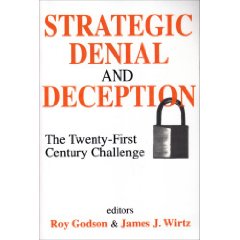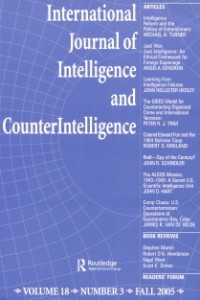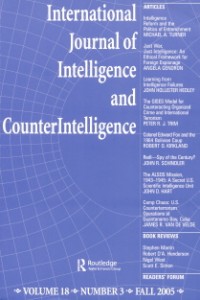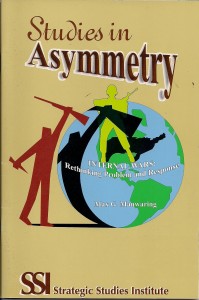I found both the updates and the further readings to be a very mixed bag, with too many countries that I am familiar with suffering from what appears to be either an over-reliance on one or two primary sources or somewhat random notation. It is clear to me that this book does *not* benefit from a systematic literature review, nor is it really current with the great web sites that are available, both in general terms as well as with specific country orientations–on top of the limited coverage, less than a third of the world, this really reduces its value.
This book has the potential to be a five-star reference work of enormous value, if it makes the following changes:
1) Create a broader board of advisors. The author performs heroically for one man, but clearly does not have the global network of true experts that is needed to make sure his coverage is world-class.
2) Add a State of Intelligence report to the front of the book, with regional overviews. The emergence of a European intelligence community, the impact of the Kosovo war on this movement as well as NATO, NATO's publication of an open source intelligence handbook, etc., the specific points of failure for 9-11 as well as the Afghan campaign that failed to capture the Al Qada leadership, all should be in there, together with the Homeland Security initiative and new relations among nations now quasi-committed to improved cooperation against terrorism–while decapitating their programs against crime. To be a proper reference work, this book must also take care in the overview to tease out the threads of progress among the varied intelligence communities that exist-national civilian, military, law enforcement, investigative journalism, business intelligence, and academic studies on intelligence. The fact that it does not reference such vital organizations as the Society of Competitive Intelligence Professionals, or the International Association of Law Enforcement Intelligence Analysts, for example, suggests that the book is being put together along very old lines of thinking, and is not yet coming to grips with the dramatic changes occurring in the real world of intelligence.
3) The publisher, or a non-profit foundation, must fund a proper literature review. Even for the United States, the most obvious country, most of the intelligence reform books published between 1999 and 2002 and listed by the Council on Intelligence do not appear in this reference work, nor does it retain the Aspin-Brown Commission Report or the House Permanent Select Committee Report on IC21, as references of continuing relevance.
4) The index must be expanded to include all authors and organizations.
5) The acronyms must be expanded to be truly comprehensive. A one page listing that is mostly military ranks and failed to include the acronyms PfP (Partnership for Peace), OSINT (open source intelligence), or C4I (command, control, communications, and intelligence–a vital aspect of understanding where intelligence fits in the larger picture) is simply not serious.
Bottom line: I will keep this book as a light-weight reference, but I will not buy it again unless the publisher gets serious about producing a quality product that is truly international and reflective of the intelligence reform and intelligence failure lines of inquiry that are well-known to serious professionals who understand that intelligence is the core competency of both governments and organizations in the age of information.








